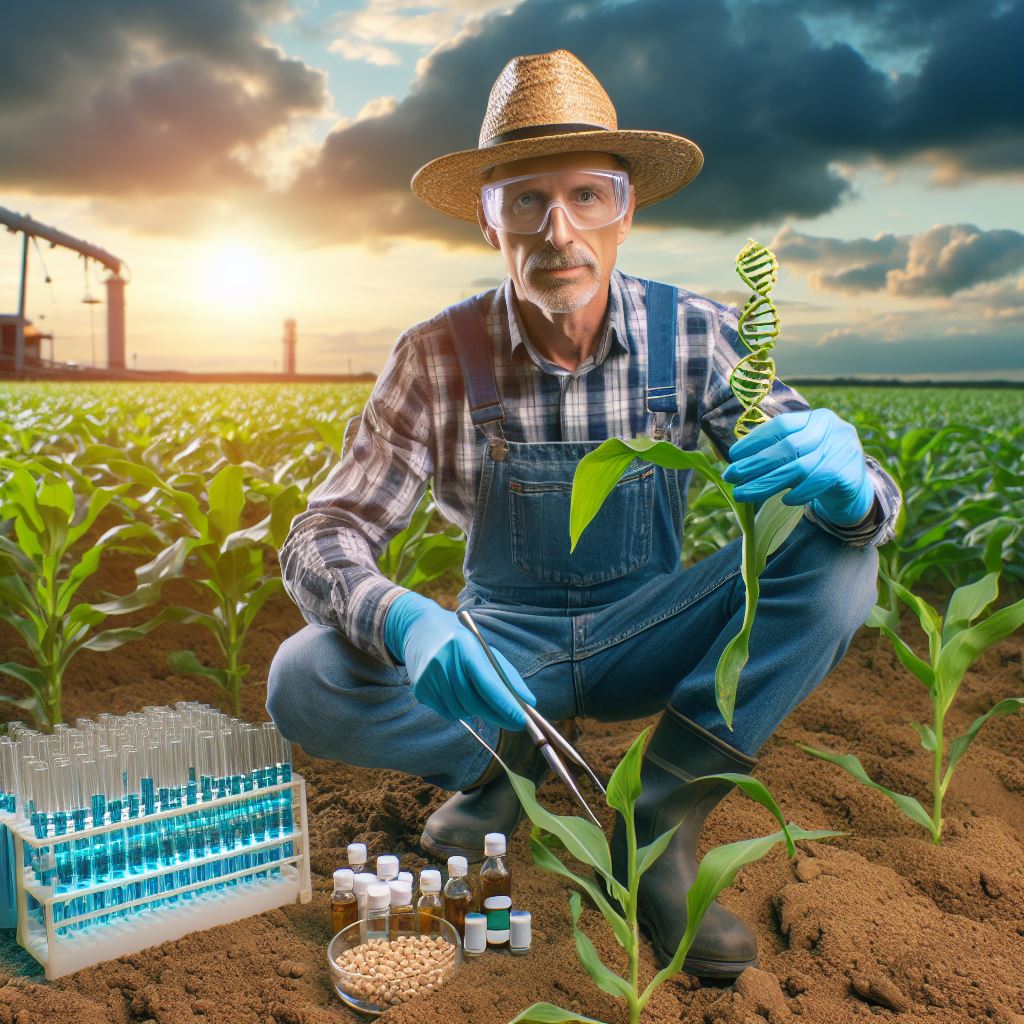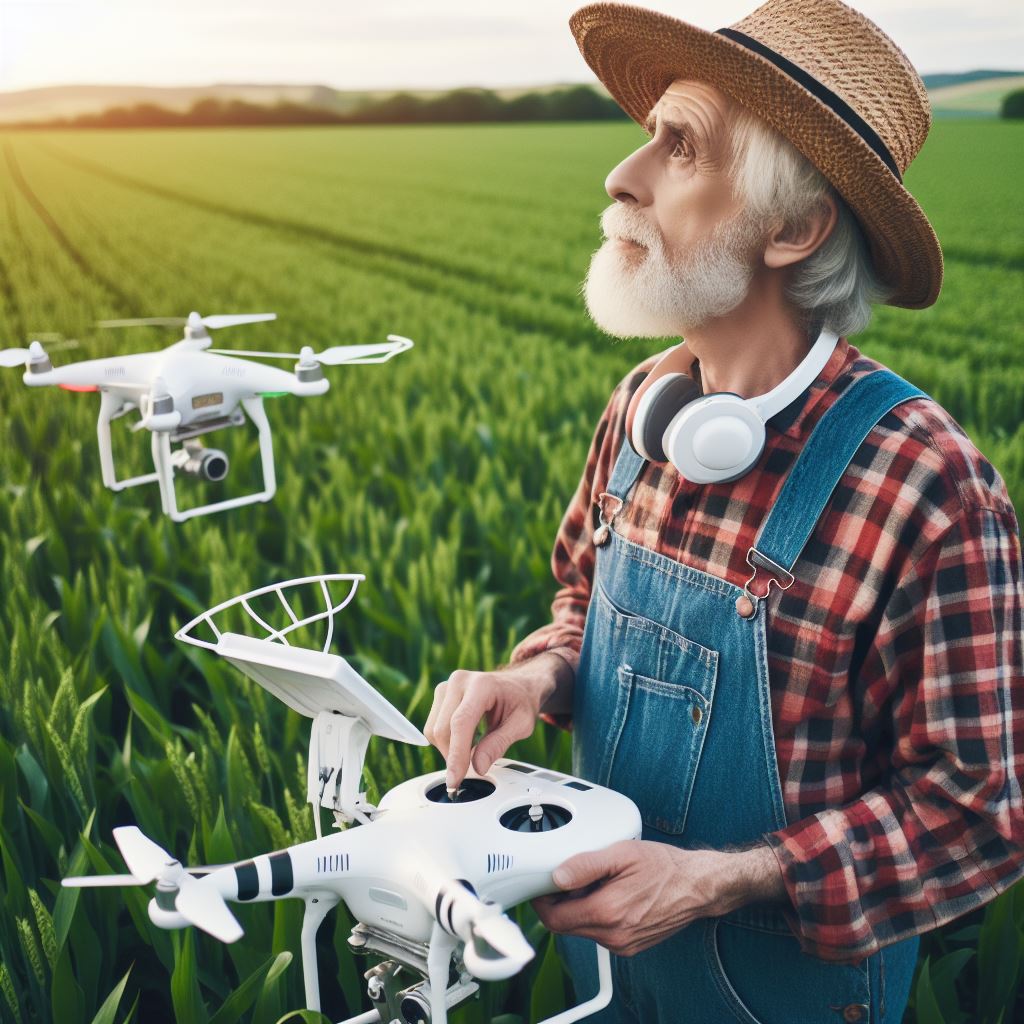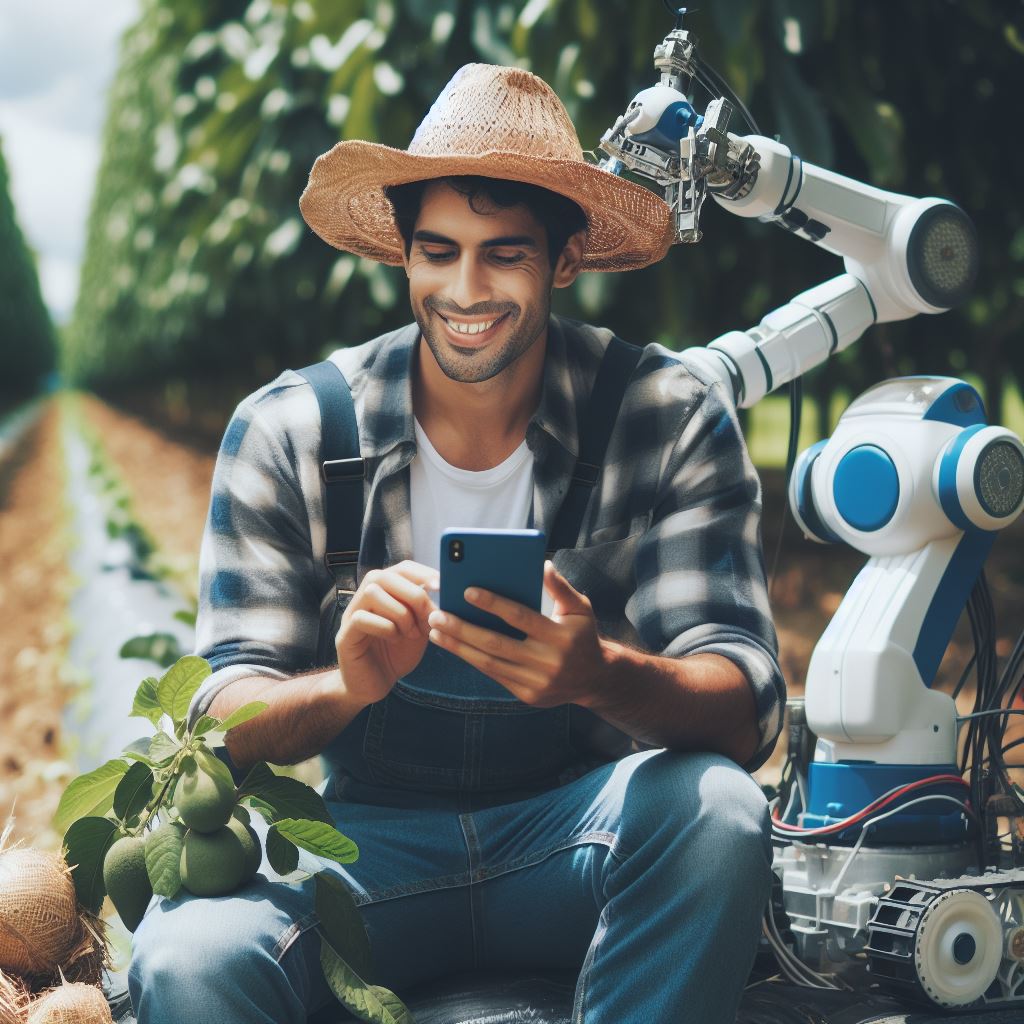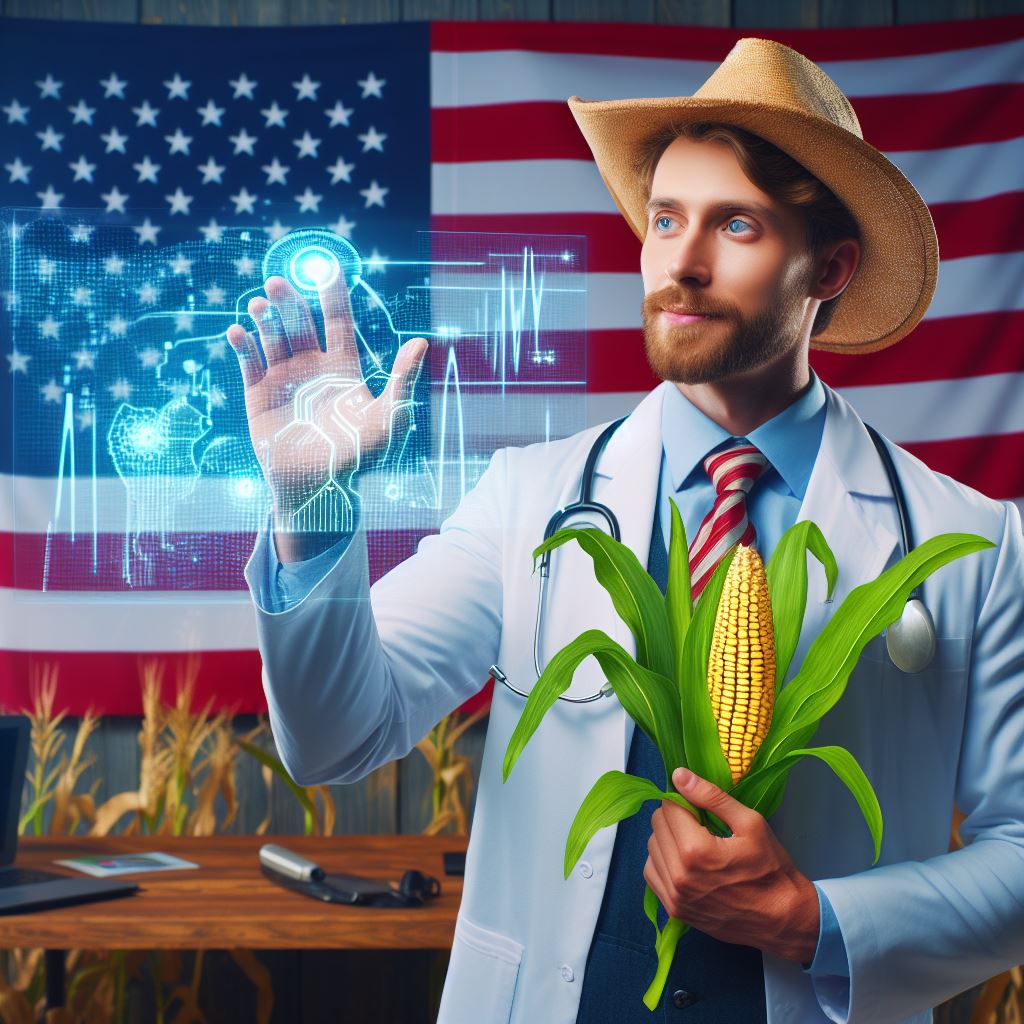Introduction
Background on smart farming
Smart farming refers to the use of modern technologies in agricultural practices for increased efficiency and productivity.
Definition of IoT in crop management
IoT, or Internet of Things, in crop management involves the use of connected devices and sensors to monitor and control agricultural processes.
Importance and benefits of implementing IoT in agriculture
Implementing IoT in agriculture offers numerous benefits such as improved crop yields, reduced resource wastage, and enhanced decision-making capabilities.
The use of IoT technology allows farmers to collect real-time data on soil moisture levels, temperature, and other environmental factors.
By analyzing this data, farmers can make informed decisions about irrigation, fertilizer application, and pest control.
With the help of IoT, farmers can achieve precise irrigation, ensuring optimal water usage and reducing water wastage.
Additionally, IoT facilitates the automation of various agricultural tasks, such as monitoring livestock and managing greenhouse environments.
By automating these processes, farmers can save time and effort, resulting in increased operational efficiency.
Furthermore, IoT-based systems enable early detection of diseases and pests, minimizing crop damage and financial losses.
Basically, the adoption of IoT in crop management revolutionizes traditional farming methods, offering improved productivity, sustainability, and profitability.
In the following sections, we will explore specific applications of IoT in different aspects of crop management.
Stay tuned to discover how IoT is transforming the agriculture industry and leading it towards a more sustainable future.
The Role of IoT in Crop Management
The advent of the Internet of Things (IoT) has revolutionized the field of agriculture, particularly crop management.
By harnessing the power of IoT, farmers can optimize their practices, reduce costs, and increase productivity.
Collecting and analyzing data
Incorporating sensors and monitoring devices into farming operations has enabled farmers to collect real-time data on various crop parameters.
Transform Your Agribusiness
Unlock your farm's potential with expert advice tailored to your needs. Get actionable steps that drive real results.
Get StartedThese devices can measure soil moisture, temperature, humidity, and even detect nutrient levels.
With this data, farmers can monitor crop conditions and make informed decisions about irrigation, fertilization, and pest control.
Additionally, data storage and analysis techniques play a crucial role in crop management.
Farmers can store and analyze the collected data to identify patterns, trends, and anomalies.
This information empowers them to optimize their farming practices and maximize yields.
Precision agriculture
Precision agriculture, enabled by IoT, allows farmers to monitor their crops in real-time and make precise decisions.
Farmers can remotely keep track of crop conditions, such as temperature, humidity, and plant growth, using IoT-powered sensors and monitoring systems.
This real-time monitoring helps them detect crop stress or disease outbreaks early and take immediate action.
Furthermore, automated systems integrated with IoT technology streamline various crop management tasks.
Automated irrigation systems can adjust water supply based on real-time data, ensuring optimal water usage.
Similarly, automated fertilizer or pesticide dosing systems can apply these substances precisely and efficiently, reducing waste and environmental impact.
This precision helps farmers maximize resource utilization and minimize costs.
Predictive analytics
IoT-based predictive analytics offers farmers invaluable insights into weather conditions and potential pest or disease outbreaks.
By analyzing historical weather data and applying predictive models, farmers can anticipate weather patterns and adjust their farming strategies accordingly.
Timely action based on these forecasts can lead to better resource allocation and improved crop protection.
Moreover, IoT-powered sensors and monitoring devices facilitate early detection and prevention of pests and diseases.
These devices can detect signs of infestation or illness in crops, allowing farmers to take immediate action.
Early detection means targeted interventions, reducing the use of harmful chemicals and increasing the chances of crop recovery.
Generally, IoT has transformed crop management by providing farmers with real-time data, precise decision-making tools, and predictive analytics.
Collecting and analyzing data through IoT devices, farmers can optimize their practices and ensure maximum crop productivity.
Precision agriculture techniques, backed by IoT, enable efficient resource utilization and waste reduction.
Predictive analytics help farmers plan ahead, anticipate weather conditions, and prevent crop losses.
The integration of IoT in crop management offers immense potential for sustainable and profitable agriculture.
Read: Smart Farming: AI’s Growing Impact
Showcase Your Farming Business
Publish your professional farming services profile on our blog for a one-time fee of $200 and reach a dedicated audience of farmers and agribusiness owners.
Publish Your ProfileApplications of IoT in Crop Management
The integration of IoT technology in crop management has revolutionized the agriculture industry.
IoT, or the Internet of Things, refers to a network of connected devices that can collect and exchange data through the internet.
In crop management, IoT has numerous applications that enhance productivity, efficiency, and sustainability.
Soil management
Soil management plays a critical role in crop production. IoT has enabled soil moisture monitoring, allowing farmers to accurately measure the moisture content in the soil.
This information helps farmers optimize irrigation and prevent water wastage. IoT also facilitates nutrient management and fertilization by providing real-time data on soil nutrient levels.
Farmers can then apply the right amount of fertilizers, minimizing waste and maximizing crop yield.
Additionally, IoT enables precise irrigation control, ensuring that crops receive the optimal amount of water for growth while minimizing water usage.
Crop health and growth monitoring
Crop health and growth monitoring is crucial for maximizing yield and preventing losses.
IoT has introduced remote sensing technologies that use satellites, drones, or sensors to collect data on crop health and growth.
This data helps farmers identify potential issues such as nutrient deficiencies or pest infestations early on.
With IoT, farmers can promptly take corrective measures, such as applying targeted fertilizers or pesticides, to mitigate the impact of these issues.
Moreover, IoT aids in yield estimation and optimization by analyzing data on factors like temperature, humidity, and precipitation.
This enables farmers to make informed decisions regarding crop rotation, planting density, and harvesting times.
Livestock monitoring
Livestock monitoring is another area where IoT has made significant advancements.
Tracking and monitoring animal health is crucial for ensuring their well-being and detecting any illnesses promptly.
IoT devices, such as wearable sensors, can collect real-time data on the animals’ vital signs, behavior, and location.
This data enables farmers to identify signs of distress or disease, allowing for timely intervention and treatment. IoT also facilitates surveillance and security systems on farms, helping to prevent theft or unauthorized access.
Automated feeding and milking systems, powered by IoT, improve efficiency by optimizing feeding schedules and milk collection processes.
Essentially, the applications of IoT in crop management are diverse and have transformative effects on agriculture.
Soil management, crop health and growth monitoring, and livestock monitoring all benefit immensely from IoT technology.
By leveraging IoT devices and data, farmers can make more informed decisions, optimize resource utilization, and improve overall productivity and sustainability.
IoT in crop management is revolutionizing the way farming is practiced, paving the way for a more efficient and advanced agricultural industry.
Read: Smart Farming: Top 5 Agri-Tech Innovations in 2024
Challenges and Limitations
Connectivity and infrastructure issues
- The success of smart farming heavily relies on a stable and reliable internet connection.
- Many farms, especially in rural areas, lack access to high-speed internet, hindering the implementation of IoT solutions.
- Connectivity issues can lead to delays in transmitting critical data, affecting real-time monitoring and decision-making processes.
- To overcome this challenge, governments and organizations need to invest in improving rural connectivity and infrastructure.
- Installing more cellular towers, satellite-based communication systems, and Wi-Fi hotspots can help address the connectivity gap.
Data security and privacy concerns
- The utilization of IoT devices in crop management generates vast amounts of data.
- This data includes sensitive and confidential information about the farm’s operations and production.
- Unauthorized access to this data can lead to intellectual property theft, competition sabotage, or market manipulation.
- Implementing robust security measures like encryption, access controls, and regular system updates is crucial.
- Farmers must also educate themselves about data privacy laws and regulations to ensure compliance.
Initial investment and adoption barriers
- Implementing IoT solutions in smart farming requires a significant initial investment.
- The costs associated with purchasing and implementing sensors, devices, and connectivity solutions can be prohibitive for small and medium-sized farms.
- Farmers may also face challenges in understanding the complexities of IoT systems and how to integrate them into their existing operations.
- To address these barriers, financial assistance, subsidies, and training programs should be made available to farmers.
- By reducing the financial burden and providing knowledge, more farmers can overcome the barriers and adopt smart farming practices.
Although smart farming has tremendous potential, these challenges and limitations need to be addressed for widespread adoption.
Governments, organizations, and farmers must collaborate to ensure seamless connectivity, data security, and financial support.
By overcoming these obstacles, the integration of IoT in crop management can revolutionize the agricultural sector and maximize productivity.
Read: Hydroponics: Water-Smart Farming Future
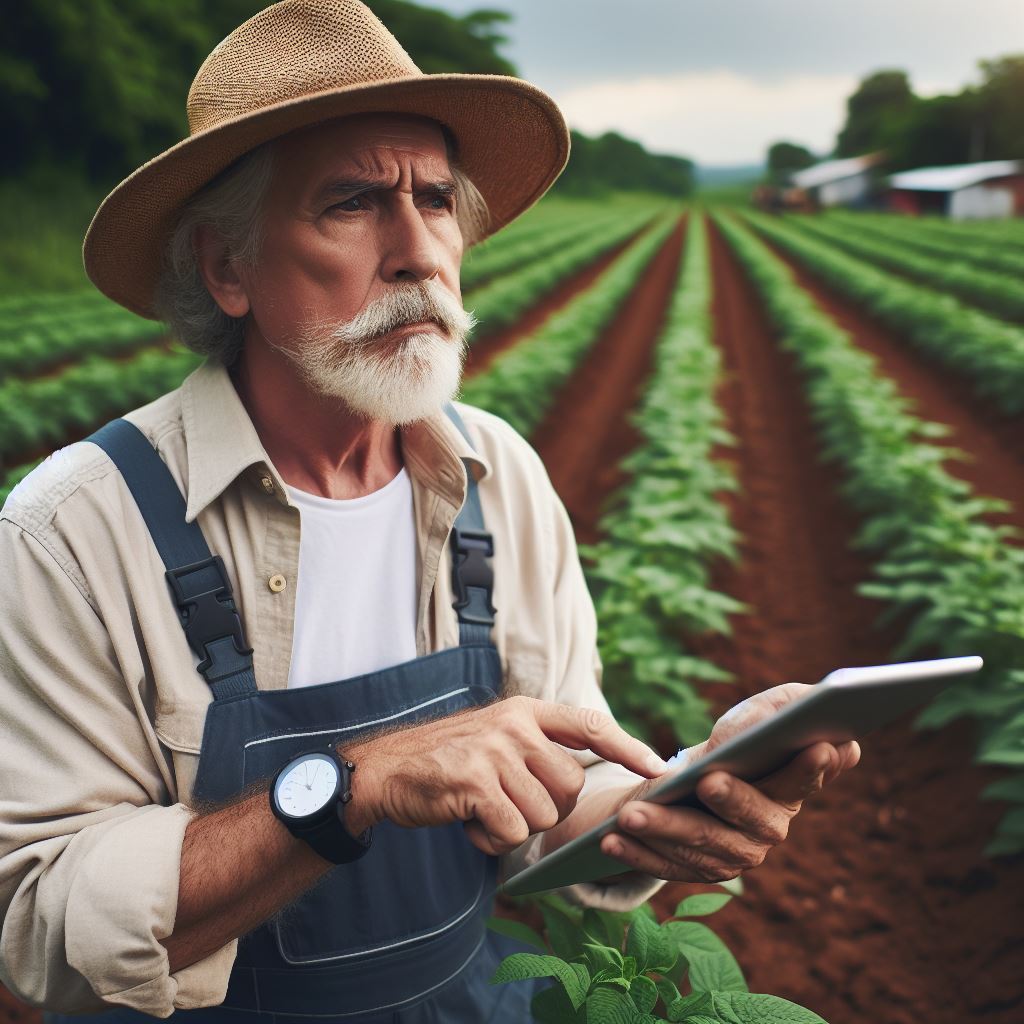
Case Studies of Successful Implementation
Smart farming practices in large-scale commercial farms
- Greenway Farms, a large commercial farm, incorporated IoT devices to monitor soil moisture levels and automate irrigation.
- By using sensors and actuators, Greenway Farms achieved precise and timely watering, resulting in higher crop yields.
- The IoT-based system allowed farmers to remotely monitor and control the water supply, saving time and resources.
- XYZ Corporation also adopted smart farming by implementing drones equipped with sensors to collect data on crop health.
- The collected data allowed farmers to detect diseases early, leading to timely interventions and minimizing crop loss.
- With real-time data collection and analysis, large-scale farms can optimize resource allocation and reduce waste.
- As a result, smart farming practices in large-scale commercial farms have significantly improved efficiency and productivity.
IoT in crop management for small-scale and urban farms
- Smart farming practices are not limited to large-scale commercial farms but are also applicable to small-scale and urban farms.
- Small-scale farmers can use IoT devices such as smart sensors to monitor factors like temperature, humidity, and light.
- These devices provide real-time updates, allowing farmers to adjust growing conditions for optimal plant growth.
- Urban farms can utilize IoT technology to monitor and control irrigation systems, ensuring efficient water usage.
- By implementing IoT in crop management, small-scale and urban farmers can achieve sustainable and high-quality yields.
- The ability to remotely monitor and control crops through IoT devices has simplified farming for urban dwellers.
- IoT-enabled vertical farming systems have revolutionized urban agriculture by maximizing space and resource utilization.
International examples of smart farming revolutionizing agriculture
- The Netherlands, known for its advanced agricultural practices, has embraced smart farming on a large scale.
- Dutch farmers utilize IoT devices to monitor various aspects like soil conditions, temperature, and humidity.
- This data-driven approach enables farmers to optimize crop growth with precision and reduce environmental impact.
- In Australia, smart farming is utilized to combat the challenges posed by harsh weather conditions.
- Farmers in Australia rely on IoT devices to monitor weather patterns, preventing crop damage and optimizing irrigation.
- The adoption of smart farming has also transformed traditional farming practices in developing countries.
- Countries like Kenya have implemented IoT-based systems to enhance productivity and improve food security.
In general, the implementation of smart farming practices, supported by IoT technology, has revolutionized crop management across the agricultural sector.
From large-scale commercial farms to small-scale and urban farms, the benefits of IoT in agriculture are evident.
Case studies from various countries demonstrate the significant improvements in efficiency, productivity, and sustainability achieved through smart farming.
As the world faces the challenges of food security and environmental sustainability, the continued development and adoption of IoT in crop management will play a crucial role in shaping the future of agriculture.
Read: Smart Farming: IoT’s Role in Agriculture Today
Future Prospects and Trends
Advancements in IoT technologies for crop management
- Continued advancements in IoT technologies hold significant promise for the future of crop management.
- Increased connectivity and improved sensors will enhance data collection and analysis for more precise farming practices.
- IoT-based systems will offer real-time monitoring of environmental variables such as soil moisture, temperature, and humidity.
- Farmers will be able to access this data remotely, allowing them to make informed decisions for optimized crop yield.
- Advanced IoT platforms will also enable predictive analytics, giving farmers insights into potential crop diseases or pest infestations.
- With the help of IoT, farmers can implement preventive measures, reducing crop loss and the need for excessive pesticide use.
- The use of drones equipped with IoT sensors will prove beneficial in monitoring large farm areas and detecting early signs of crop issues.
- As IoT technologies continue to evolve, we can expect more sophisticated applications dedicated to crop management.
Integration with other emerging technologies
- The integration of IoT with other emerging technologies like AI and robotics will revolutionize crop management practices.
- AI algorithms can analyze vast amounts of data collected by IoT sensors, identifying patterns and making intelligent recommendations.
- This integration will enable autonomous decision-making systems, where AI algorithms can control irrigation, fertilization, and pest control.
- Robotics, coupled with IoT, can automate labor-intensive tasks such as planting, harvesting, and weeding.
- Smart robots can accurately identify and remove weeds, minimizing the need for herbicides and reducing environmental impact.
- Collaborative efforts between IoT, AI, and robotics will streamline farming operations, increasing efficiency and reducing costs.
- Farmers will benefit from real-time insights, enabling them to make educated decisions and adapt to changing environmental conditions.
Potential impact on sustainable farming and global food security
- The adoption of IoT in crop management has the potential to significantly impact sustainable farming practices.
- Precise data collection provided by IoT sensors will enable optimized resource management, reducing waste and environmental impact.
- IoT-based irrigation systems can ensure water is used efficiently, preventing overwatering and conserving this valuable resource.
- Intelligent pest control systems, driven by IoT and AI technologies, will minimize the use of chemical pesticides.
- This reduction in pesticide usage will enhance soil health, biodiversity, and overall ecosystem sustainability.
- With IoT-enabled monitoring, early detection of crop diseases can prevent widespread outbreaks, ensuring food security.
- By increasing crop yield and reducing losses, smart farming practices enabled by IoT will contribute to global food security.
In essence, the future prospects and trends of IoT in crop management are promising.
Advancements in IoT technologies will provide farmers with real-time data and predictive analytics for improved decision-making. Integration with emerging technologies like AI and robotics will automate tasks, streamline operations, and maximize efficiency.
Moreover, the adoption of IoT in crop management will enhance sustainability, conserving resources, reducing chemical usage, and ensuring food security.
As the agricultural industry embraces these advancements, the potential benefits for farmers and the world’s food production are immense.
Delve into the Subject: Agri Robots: The Pros and Cons
Conclusion
IoT technology has shown immense potential in revolutionizing crop management by providing real-time data, optimizing resource usage, and enhancing decision-making processes for farmers.
By adopting IoT solutions, farmers can improve productivity, reduce costs, minimize environmental impact, and ensure sustainable agriculture for a growing population.
As technology continues to advance, the integration of IoT in agriculture holds the promise of transforming traditional farming methods into efficient and precise practices that meet global food demands.
Showcase Your Farming Business
Publish your professional farming services profile on our blog for a one-time fee of $200 and reach a dedicated audience of farmers and agribusiness owners.
Publish Your ProfileIn a nutshell, the application of IoT in crop management is crucial for the future of agriculture.
It offers numerous benefits that can lead to increased yields, reduced waste, and improved sustainability.
By embracing smart farming practices, farmers can stay ahead in the ever-changing landscape of agriculture and contribute to a more efficient and sustainable food production system.
As IoT technology further evolves, its potential to revolutionize agriculture is immense, paving the way for a more connected and data-driven future in farming.

